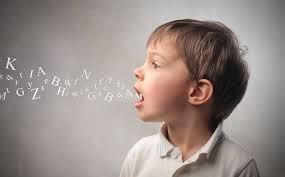
Speech disorders in children can sometimes be difficult to spot, especially since language development varies widely from one child to another. However, certain signs and behaviors can signal that a child may be struggling with a speech disorder. Early identification is crucial for effective intervention and support.
1. Delayed Speech Development
One of the first signs of a potential speech disorder is delayed speech. While every child develops at their own pace, by the age of two, most children should be using simple sentences and expressing themselves clearly. If your child is not using words or is far behind in speech milestones (such as using fewer than 50 words by age 2), it may indicate a speech delay.
2. Difficulty Pronouncing Words
Mispronouncing words is common among toddlers, but if a child continues to have difficulty pronouncing common words beyond the typical age (e.g., age 4 or 5), it could be a sign of a speech disorder. Persistent difficulty with sounds, such as leaving off or substituting sounds (e.g., saying "wabbit" instead of "rabbit"), may point to articulation issues.
3. Limited Vocabulary
Children typically build their vocabulary rapidly between the ages of 2 and 5. If a child’s vocabulary seems significantly limited compared to their peers, it may indicate a problem. A limited vocabulary could be a sign of a language disorder, where a child may struggle with word recall, naming objects, or understanding language.
4. Difficulty Understanding or Following Directions
Children with speech and language disorders may struggle to comprehend simple instructions or follow through with multi-step tasks. If your child often has trouble understanding or responding to everyday commands (e.g., “Please put your shoes on” or “Can you bring me the book?”), it could be a sign of a receptive language disorder.
5. Stuttering or Disfluency
Stuttering—characterized by repeated sounds, syllables, or words, or pauses in speech—may be noticeable as early as age 2 or 3. If the stuttering continues beyond early childhood or becomes more severe, it could indicate a speech disorder.
If you notice any of these signs in your child, it’s important to seek guidance from a speech-language pathologist. Early intervention can make a significant difference in helping children develop effective communication skills.




 click and follow Indiaherald WhatsApp channel
click and follow Indiaherald WhatsApp channel